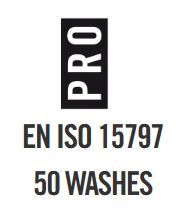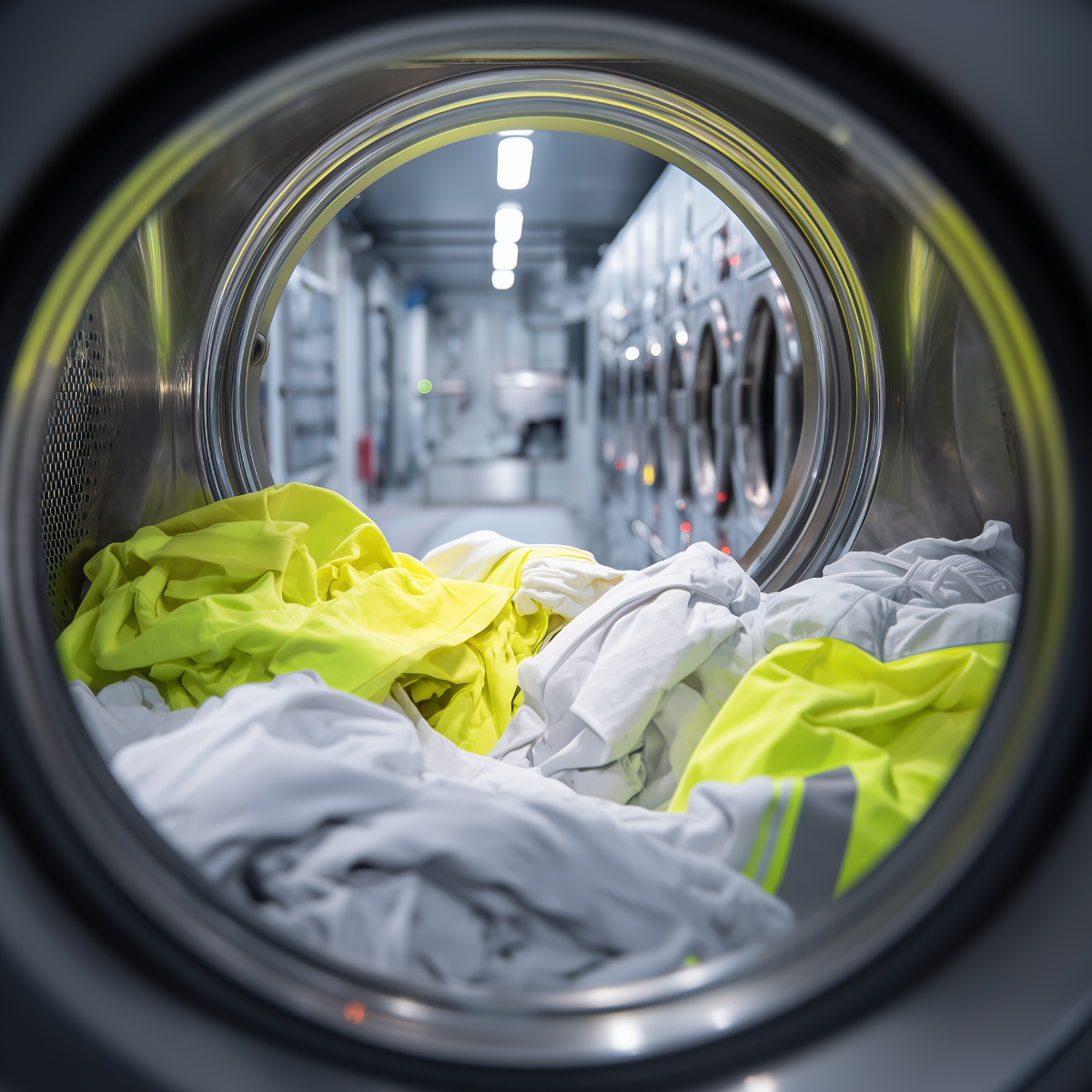What does the EN ISO 15797 max 50 washes marking mean?
Here's how the marking and washing method of EN ISO 15797 works.
A common question from our customers concerns the ‘EN ISO 15797 max 50 washes’ marking that we use on many of our products. Many wonder what the marking actually means. Does the garment have to be discarded after 50 washes? How does this affect certification? In this article, I explain what the marking means, how the testing is done and what you as a user need to consider.
What does ‘Max 50x’ mean?
When a garment is marked with EN ISO 15797 max 50x, it means that the fabric has been tested and approved in a laboratory environment after being washed 50 times according to the industrial washing method EN ISO 15797. The EN ISO 15797 washing method is used to evaluate textiles/garments that are to be industrially washed and consists of both a washing and drying process.
This means that the marking guarantees that the fabric in the garment can withstand at least 50 industrial washes without compromising its flame retardant, high visibility or antistatic properties. It is a misconception that the garment must be discarded after reaching the limit of 50 washes.
On our website, we use the following symbol to mark protective clothing that is approved according to EN ISO 15797 max 50x.

The tests are only performed for standards that require testing after a specified number of washes. If there is no requirement for a specified number of washes in the standard, the test is normally carried out after no washes or five washes. The notified body that issues the EU type certificate also checks the tests and marking.
Tests carried out after 50 washes are:
- Flame protection test according to EN ISO 11612 A1
- Test of colour coordinates for fluorescent fabrics according to EN ISO 20471
- Test of antistatic properties according to EN 1149-5


At least 50 washes, but the garment lifespan may be longer
It is important to understand that the marking does not mean that the garment becomes unusable after 50 washes. Rather, it indicates that the fabric has been tested and certified and retains its protective properties for at least 50 wash cycles under controlled conditions.
When protective clothing is used in its proper environment, its lifespan is also affected by factors such as dirt, wear and tear, frequency of use and how the garments are cared for. Since the testing disregards these factors and is performed on clean fabrics, the actual lifespan may be both shorter and longer than 50 washes.
A dirty garment that is not washed regularly may lose its visibility or other properties sooner. At the same time, a well-cared-for garment can function perfectly well even after 50 washes.
Supplementary testing to ensure quality
Since EN ISO 15797 is always performed on new, clean fabrics without dirt, Tranemo supplements this with its own user tests in real environments. The used garments are then washed by our industrial laundry partners to obtain the most reliable results. Once the user tests and washing are complete, the garments are checked to ensure that they continue to perform at the same high level. To ensure the high quality of fabrics and reflectors, we also carry out internal washing tests before each production run. All this is done to achieve the best results and safety.
Inherent flame protection provides long durability
Tranemo only uses fabrics with inherent flame protection. This means that the protection is built into the chemical structure of the fibre even before the yarn is spun. The flame protection cannot therefore be washed or worn away, which contributes to long-lasting protection and flame retardant clothing with a longer lifespan.
User responsibility is crucial
In order for the garment to retain its properties, the user must follow the washing and care instructions that come with the garment. Regular cleaning and visual inspection are crucial to ensure that the garment still meets the requirements.
In short:
- EN ISO 15797 max 50x = tested and approved after 50 washes in a laboratory environment.
- The marking indicates the test level – not an absolute lifespan.
- Actual durability depends on how the garment is used and cared for.
- Inherent flame retardancy ensures long-lasting protection.
- Always follow the washing and care instructions for maximum service life of protective clothing.
By understanding what the marking means and how to best care for your protective clothing, you can extend its service life and ensure that the garment retains its protective function for as long as possible.
